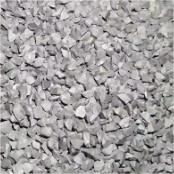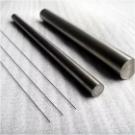Kiss Rust Goodbye: Your Easy Brass Rescue Guide
(How To Remove Rust From Brass Plated Metal)
That beautiful brass lamp base or cool vintage drawer pull looked amazing. Then you spotted it. Ugly reddish-brown spots creeping across the surface. Rust. On brass? Actually, yes. Brass plating is a thin layer over a cheaper metal, usually steel. If water gets underneath or the plating wears thin, the steel underneath rusts, pushing through and ruining the look. Don’t panic. You can fight back. Forget harsh chemicals. Simple stuff from your kitchen often works best.
First, figure out the problem. Real solid brass won’t rust; it tarnishes green. Those reddish spots? That’s rust from the metal underneath the brass layer. Your goal is removing the rust without wrecking the thin brass plating. Gentle is key.
Gather your tools. You likely have them already. White vinegar or baking soda work well. Grab a soft cloth, an old toothbrush with soft bristles, some warm water, and maybe a little dish soap. Protect your work surface with newspaper. Wear gloves if your skin is sensitive.
Try the vinegar method first. Pour some white vinegar into a bowl. Dip your soft cloth into the vinegar. Wring it out so it’s damp, not dripping. Gently rub the rusty spots. Don’t scrub hard. Let the vinegar do the work. The acid in vinegar breaks down the rust. For small spots, dip a cotton swab in vinegar and dab it on. Let the vinegar sit on the rust for a few minutes, maybe five. Watch the rust start to dissolve.
After a few minutes, take your soft-bristled toothbrush. Dip it in clean water. Very gently brush the area. You want to lift the loosened rust away. Rinse the toothbrush often. Wipe the area with your damp cloth. Check your progress. Stubborn rust might need another vinegar application. Be patient. Scrubbing too hard scratches the soft brass plating.
If vinegar isn’t cutting it, try baking soda. Make a thick paste. Mix baking soda with a little water. It should look like toothpaste. Smear this paste thickly over the rust spots. Let it sit. Baking soda is mildly abrasive and reacts with the rust. Leave it on for maybe thirty minutes, even an hour for bad spots. Don’t let it dry completely hard.
After the paste sits, dip your soft toothbrush in warm water. Gently brush the paste away. Rinse the brush often. The paste should lift off the rust as you brush. Wipe the area clean with a damp cloth. Rinse the whole piece under lukewarm water. Dry it immediately and completely with a soft towel. Any leftover water causes new rust.
Polishing comes next. Use a tiny bit of brass polish on a soft cloth. Rub it gently over the clean, dry brass. Only polish areas that were affected or look dull. Too much polishing wears down the thin plating. Buff it to a nice shine with a clean part of the cloth.
(How To Remove Rust From Brass Plated Metal)
Prevent future rust battles. Keep your brass-plated items dry. Wipe off spills or condensation right away. Don’t use harsh cleaners on them. A light coat of car wax or mineral oil buffed on occasionally creates a protective barrier. This keeps moisture out and slows down new rust formation. Store these pieces somewhere dry, not a damp basement.
Inquiry us
if you want to want to know more, please feel free to contact us. (nanotrun@yahoo.com)


